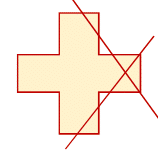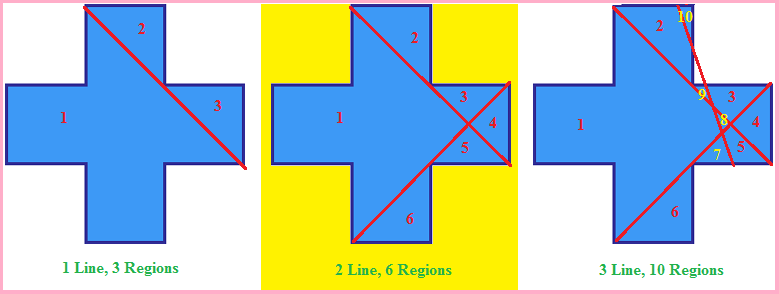Cutting A Cross
By using 2 straight lines, what is the most number of regions that we can separate the cross into?
Note: Using 1 straight line, it is possible to separate the cross into 3 regions.
This section requires Javascript.
You are seeing this because something didn't load right. We suggest you, (a) try
refreshing the page, (b) enabling javascript if it is disabled on your browser and,
finally, (c)
loading the
non-javascript version of this page
. We're sorry about the hassle.
 The two straight lines can intersect only once, and the most pieces are produced if this happens within the cross.
The two straight lines can intersect only once, and the most pieces are produced if this happens within the cross.

